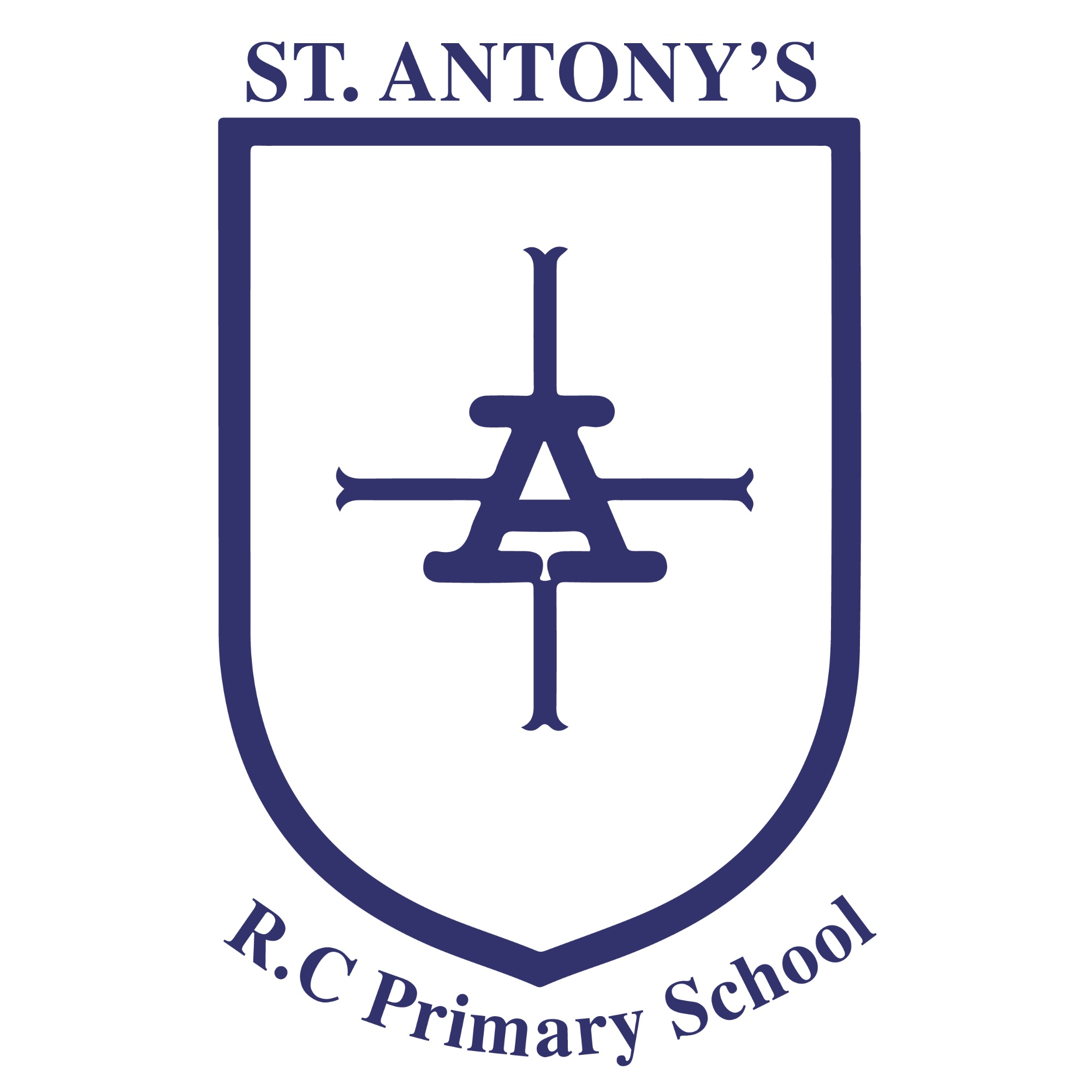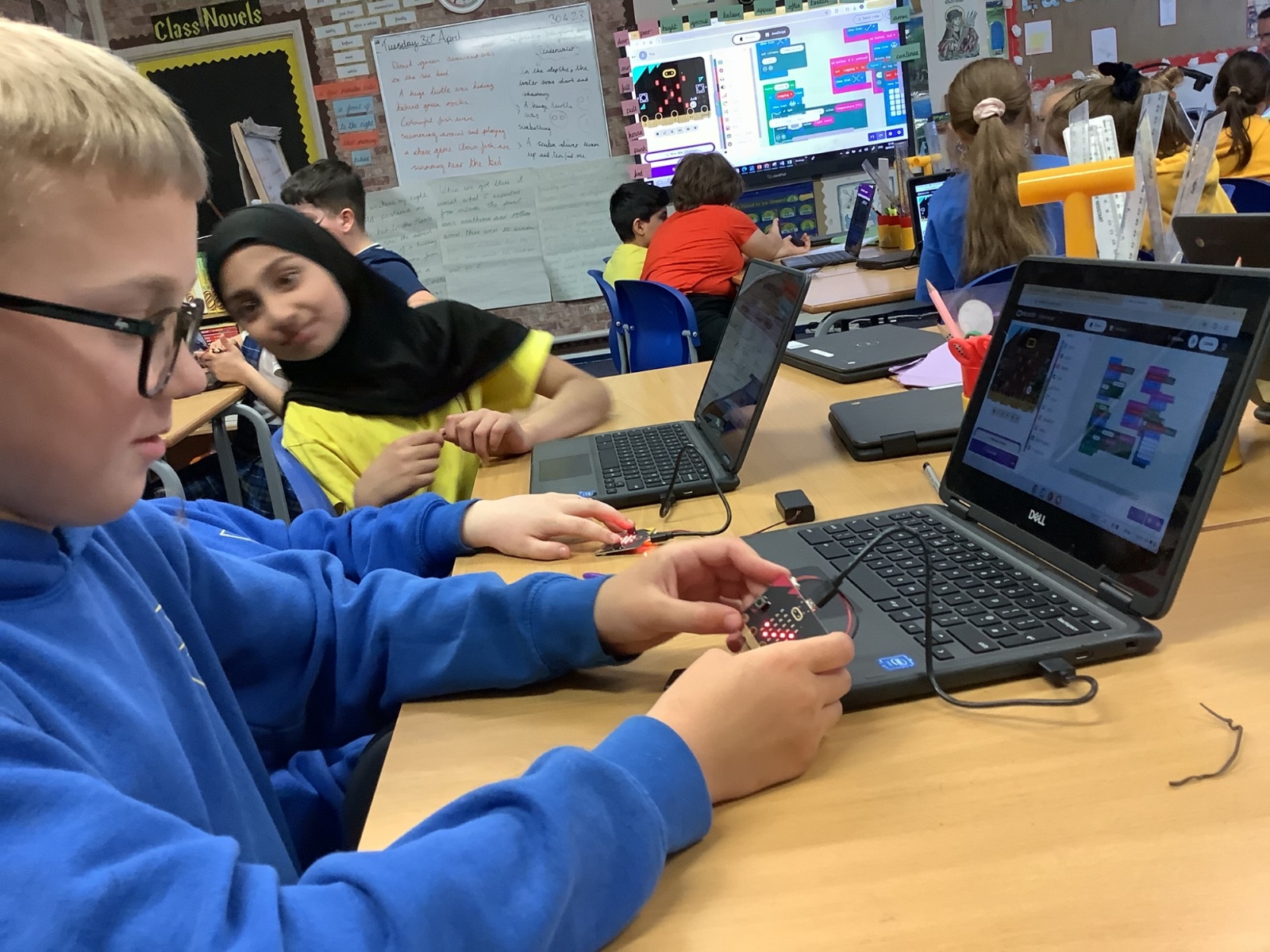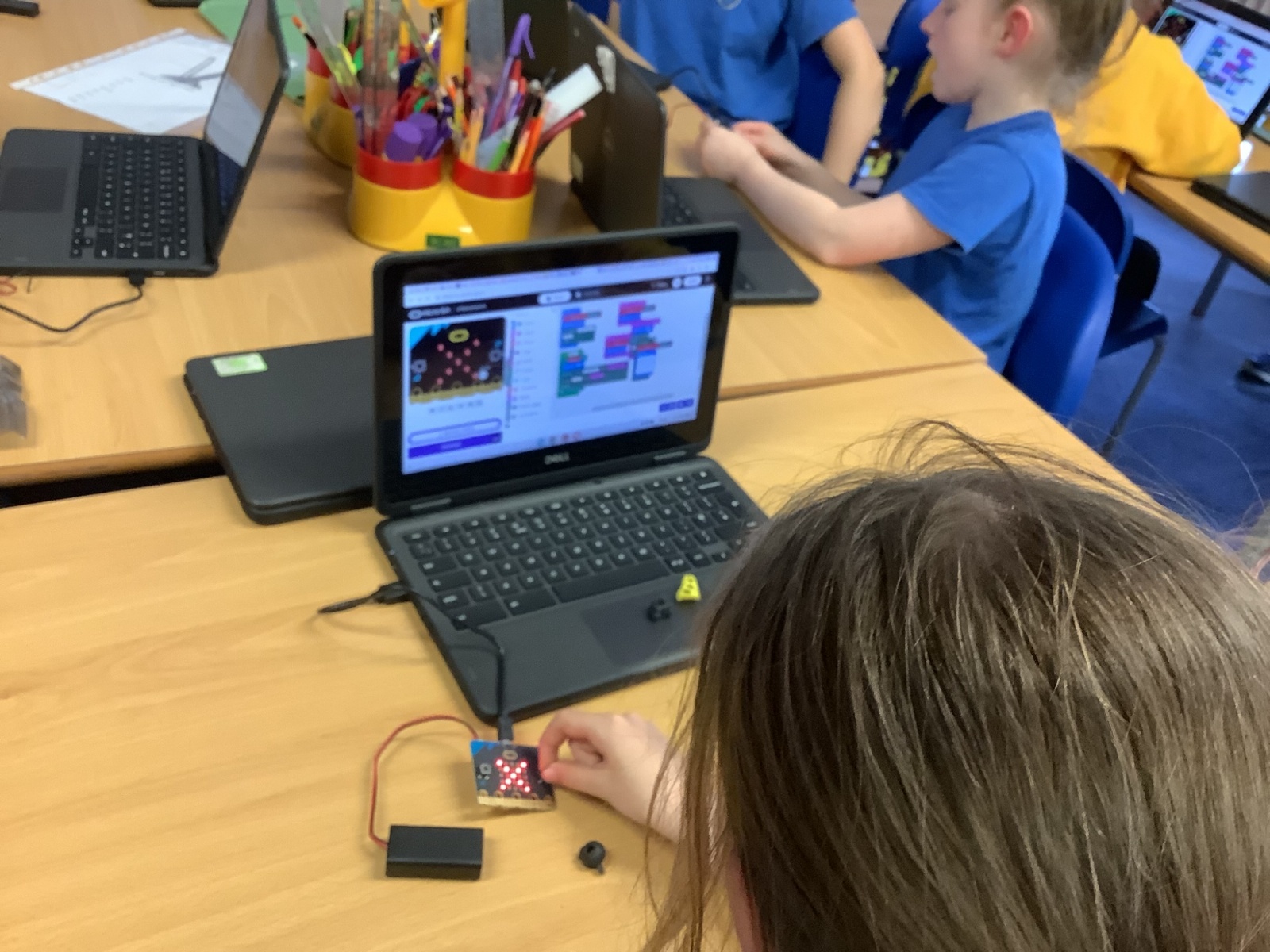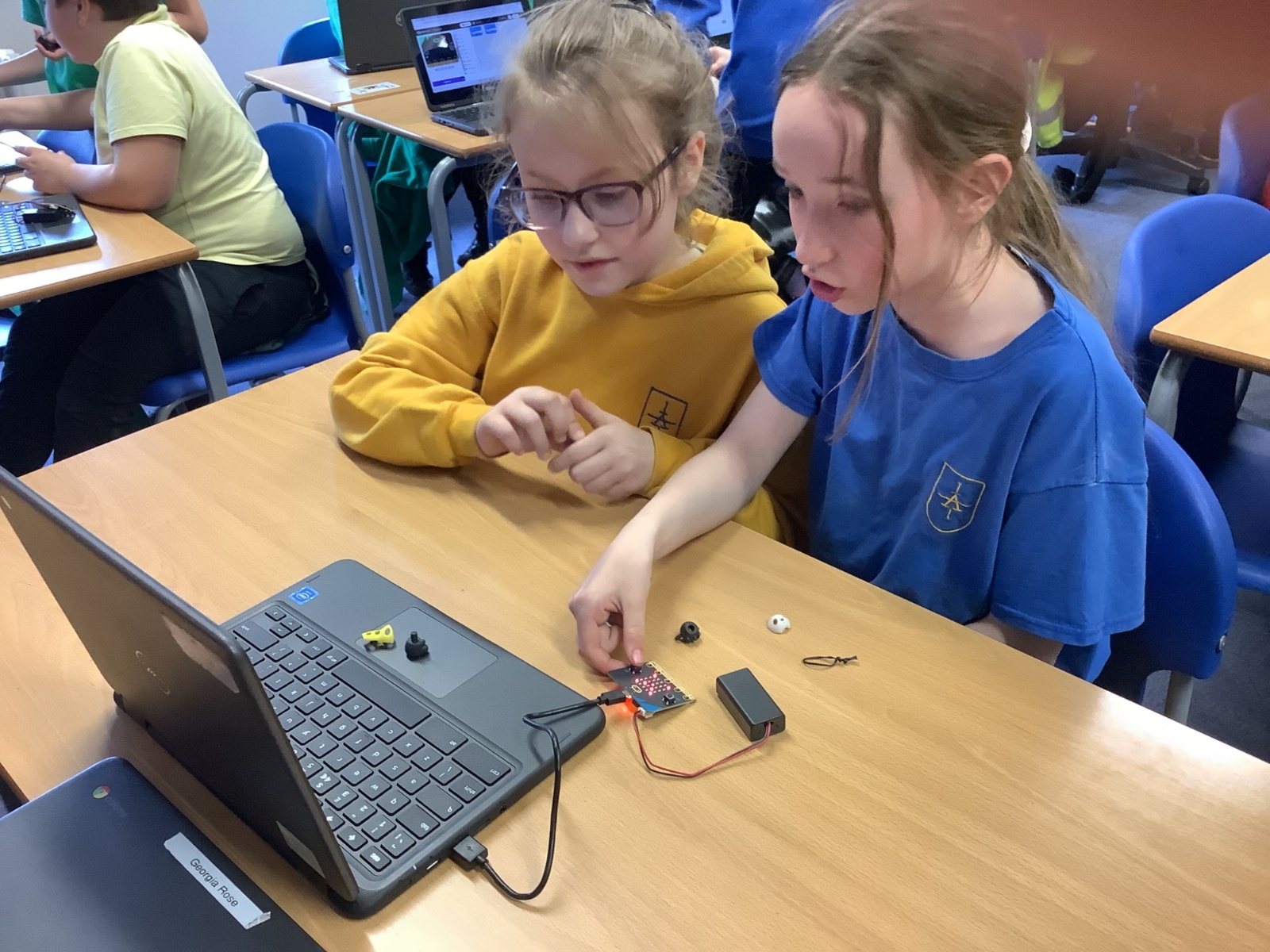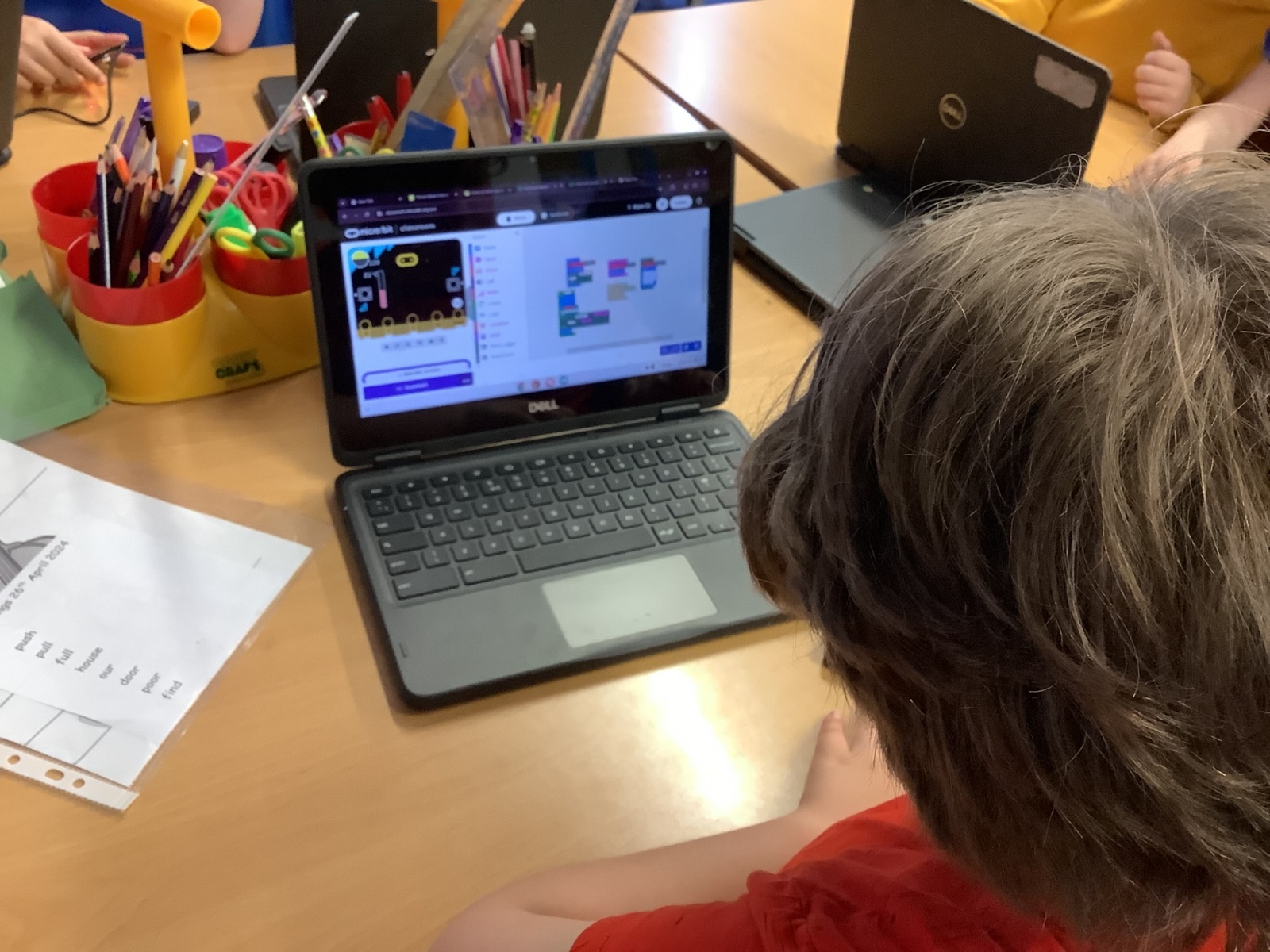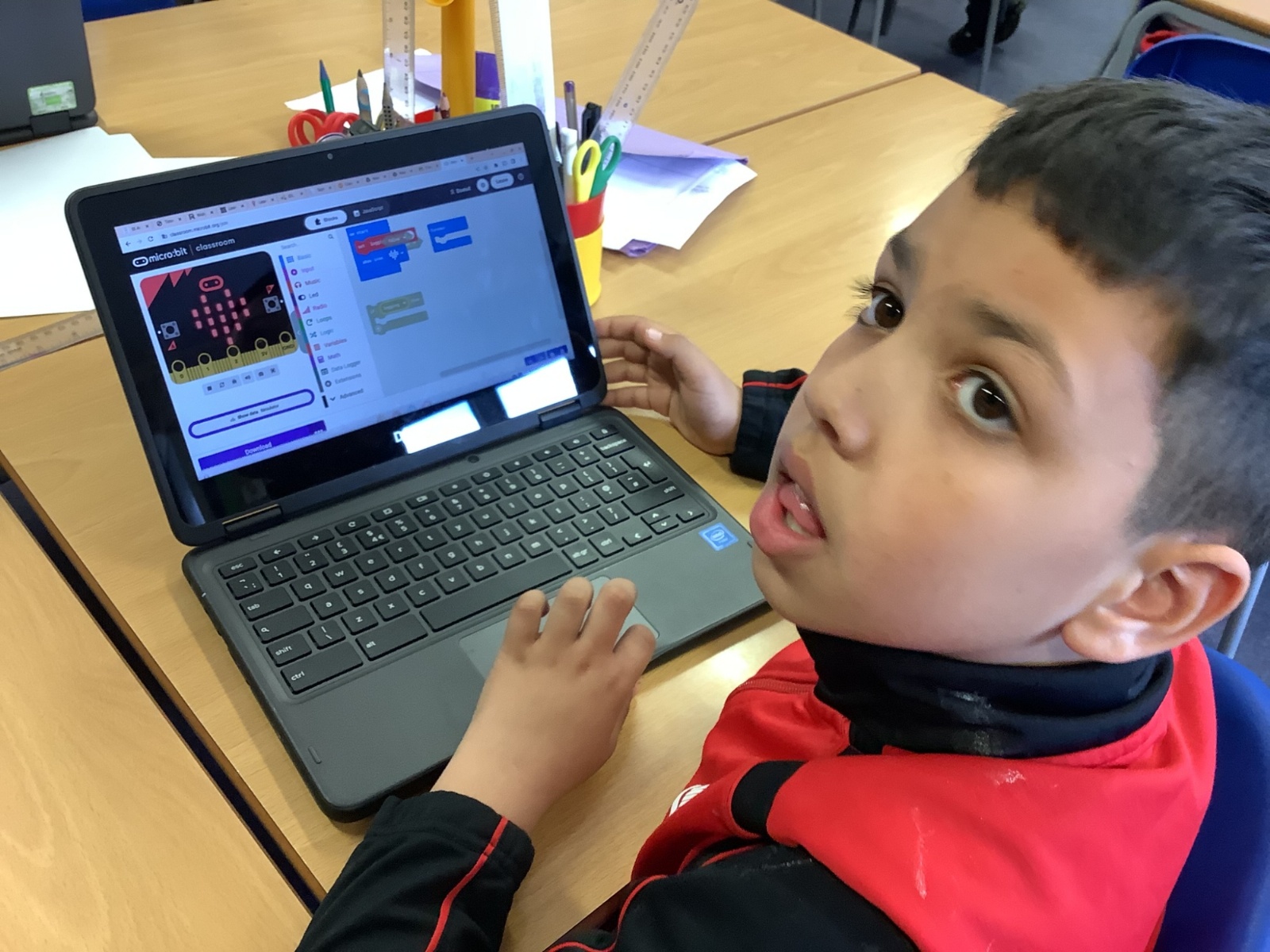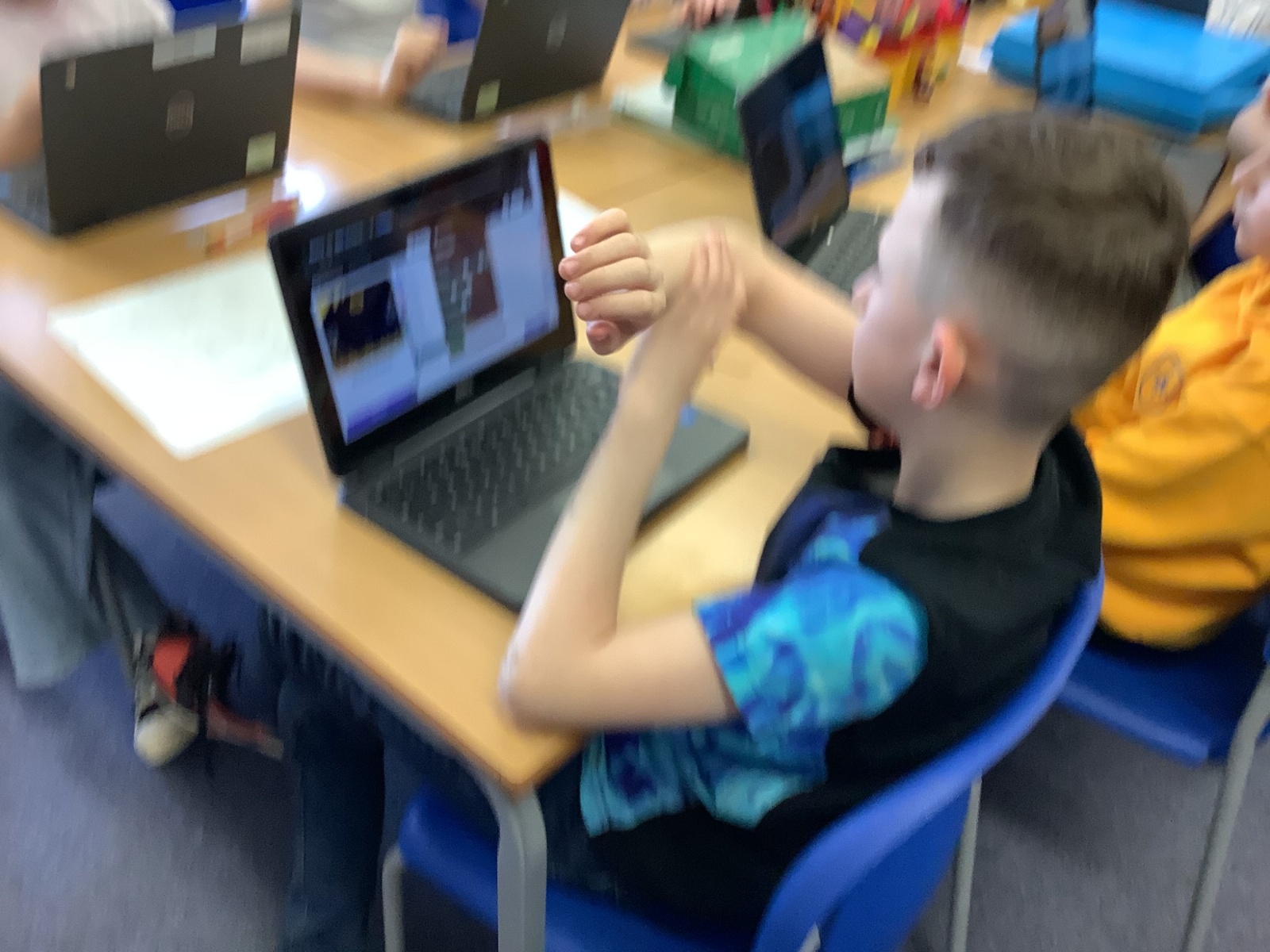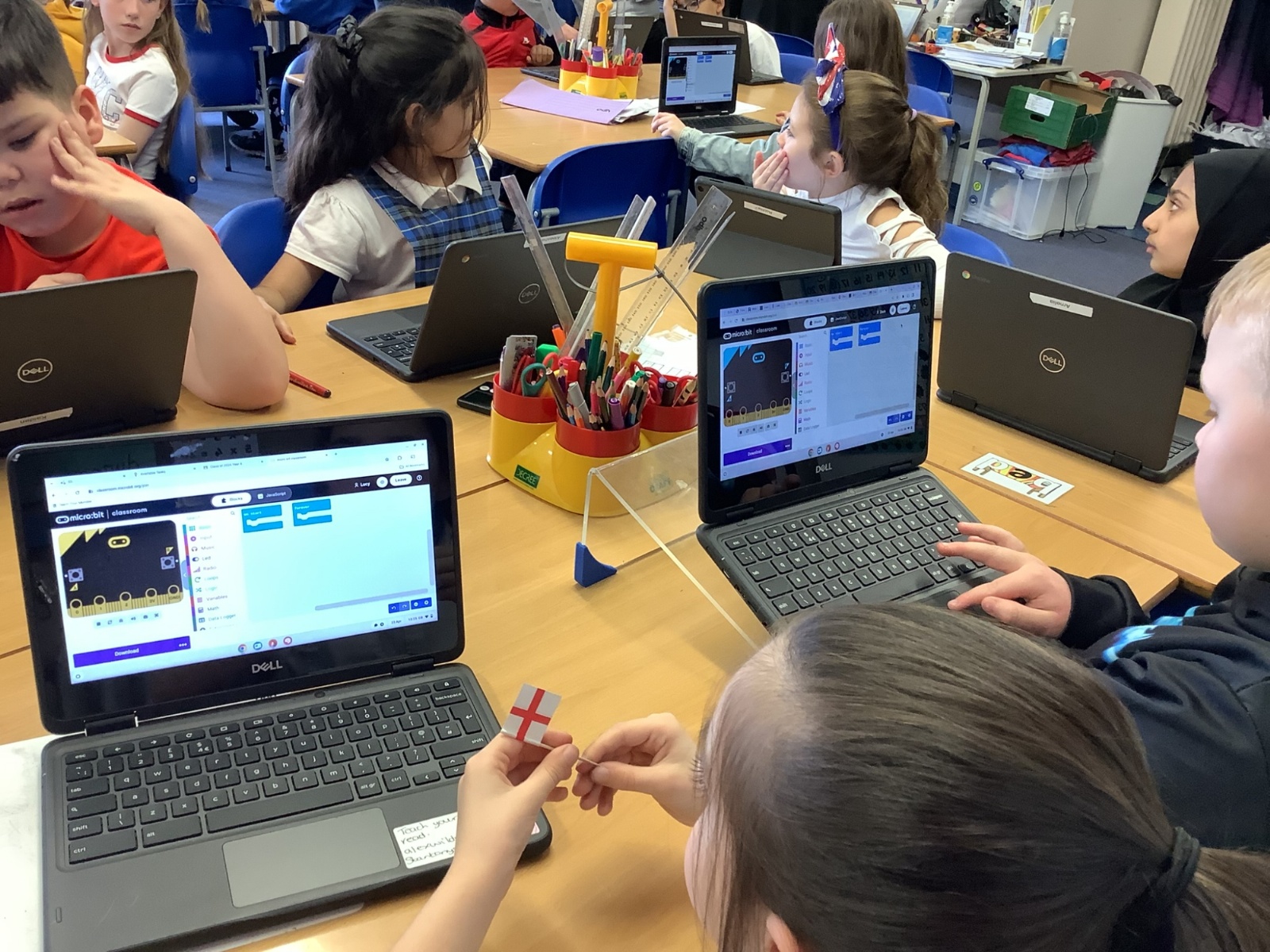Computing

“And the Lord said ‘Behold, they are one people…and nothing that they propose to do will now be impossible for them.”
Our computing ambassadors
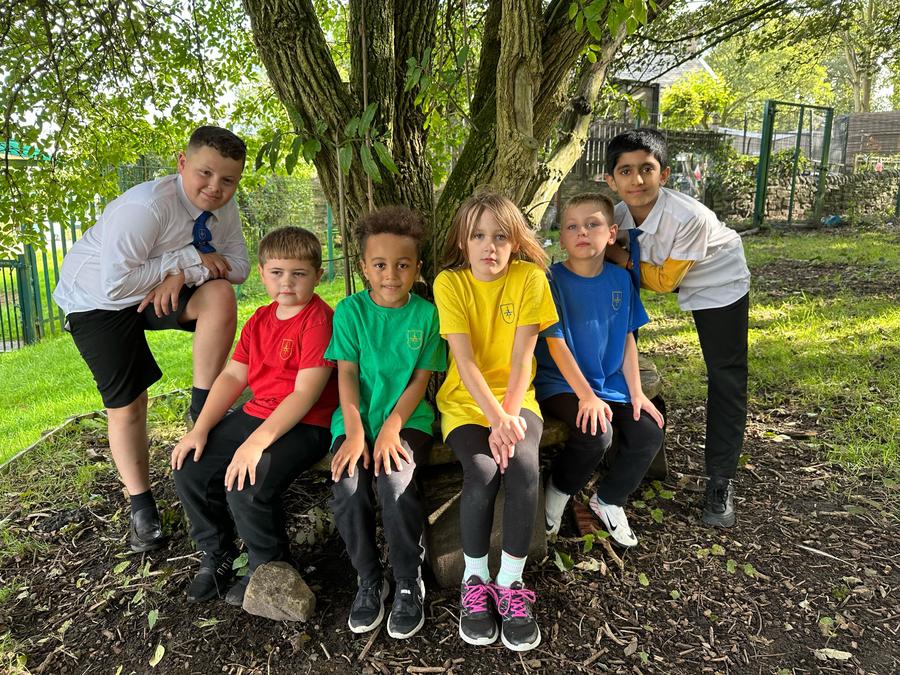
Intent
At St Antony's primary school, the intent of the Computing curriculum goes beyond teaching isolated ICT skills. It recognizes that Computing is a creative and integral part of children's education, providing them with the knowledge and skills to understand and use technology confidently and responsibly. The intent is to equip pupils with the necessary computational thinking skills to solve problems, express their creativity, and become digitally literate citizens.
The Computing curriculum's intent encompasses the following aims:
- Digital Literacy: To develop pupils' understanding of the digital world, promoting their safe and responsible use of technology.
- Computer Science: To foster pupils' computational thinking, problem-solving, and logic skills.
- Information Technology: To enable pupils to become proficient users of a range of digital tools and software.
- Creativity: To encourage pupils to explore and express their creativity through digital technologies, including coding, multimedia, and digital art.
Implementation
At St Antony's primary school, the implementation of the Computing curriculum is carefully planned and executed throughout all year groups. The curriculum is designed to provide a sequential progression of knowledge and skills, building upon prior learning and catering to the needs and abilities of all pupils. The Computing lessons are engaging, relevant, and contextualized to real-life situations, fostering pupils' curiosity and enthusiasm for the subject.
Our curriculum looks at
- Computational Thinking: Pupils are systematically taught the principles of computational thinking, including abstraction, decomposition, logic, and algorithms, through age-appropriate activities and projects.
- Coding and Programming: Pupils have regular opportunities to learn coding and programming, using a range of tools such as Scratch, Python, or text-based coding languages. They develop their skills progressively and apply them to real-world challenges.
- Digital Literacy and Online Safety: Pupils are explicitly taught about online safety, privacy, and the responsible use of technology. They acquire essential skills to protect themselves, navigate safely online, and critically evaluate online content.
- Cross-curricular Links: Computing is integrated into other subjects, providing opportunities for pupils to apply their computing skills and knowledge in real-world contexts. For example, using spreadsheets in Mathematics or creating multimedia presentations in English.
- Use of Technology: Pupils have access to a range of digital devices, such as laptops, tablets, and other specialized equipment, ensuring they can explore different technologies and gain hands-on experience.
- Enrichment Opportunities: The school provides opportunities, such as coding clubs, STEM competitions, and visits to industry professionals, to broaden pupils' experiences in Computing.
Impact
At St Antony's R.C primary school, the impact of the Computing curriculum is evident in pupils' attainment, progress, and holistic development. The impact of Computing is not confined to the subject itself but extends to the wider learning experiences and skills acquired by pupils.
The impact of our curriculum can be seen in the following areas:
- Attainment and Progress: Pupils demonstrate a deep understanding of key Computing concepts and skills, achieving high standards across the curriculum. They make progress in line with or exceeding national expectations, with evidence of effective use of assessment to inform teaching and learning.
- Computational Thinking Skills: Pupils develop strong computational thinking skills, enabling them to approach complex problems methodically, break them down into manageable parts, and identify efficient solutions. These skills have a positive impact on their problem-solving abilities across all subjects.
- Confidence and Digital Literacy: Pupils show confidence in using a range of digital tools, software, and platforms to create, collaborate, and communicate effectively. They are digitally literate, able to navigate the online world safely and responsibly.
- Creativity and Engagement: Pupils use Computing as a means of self-expression, showcasing their creativity through coding, multimedia presentations, and digital art. They are actively engaged in lessons, developing a passion for using technology for creative purposes.
- Digital Citizenship: Pupils demonstrate responsible online behaviour, understanding the importance of respect, empathy, and ethical considerations in the digital realm. They showcase respect for copyright laws, intellectual property, and privacy.
